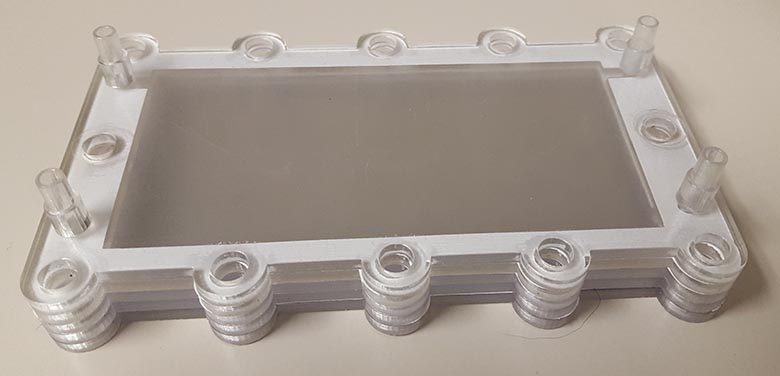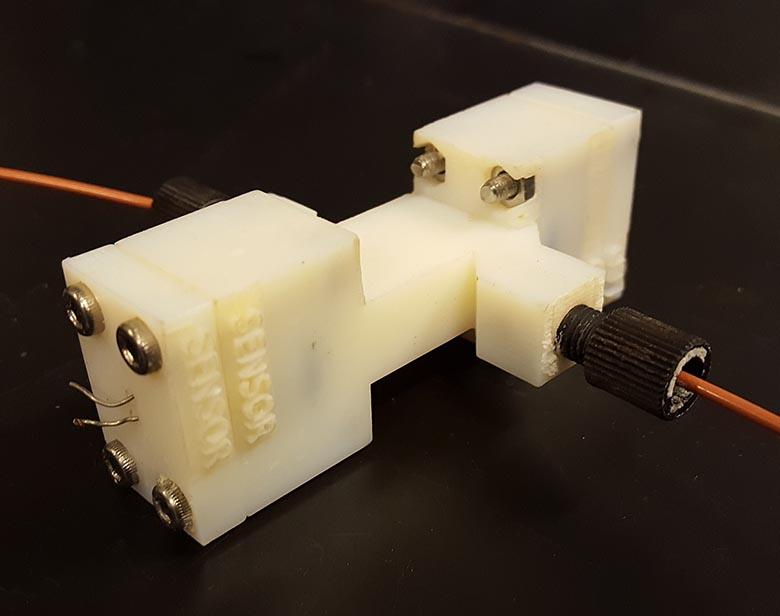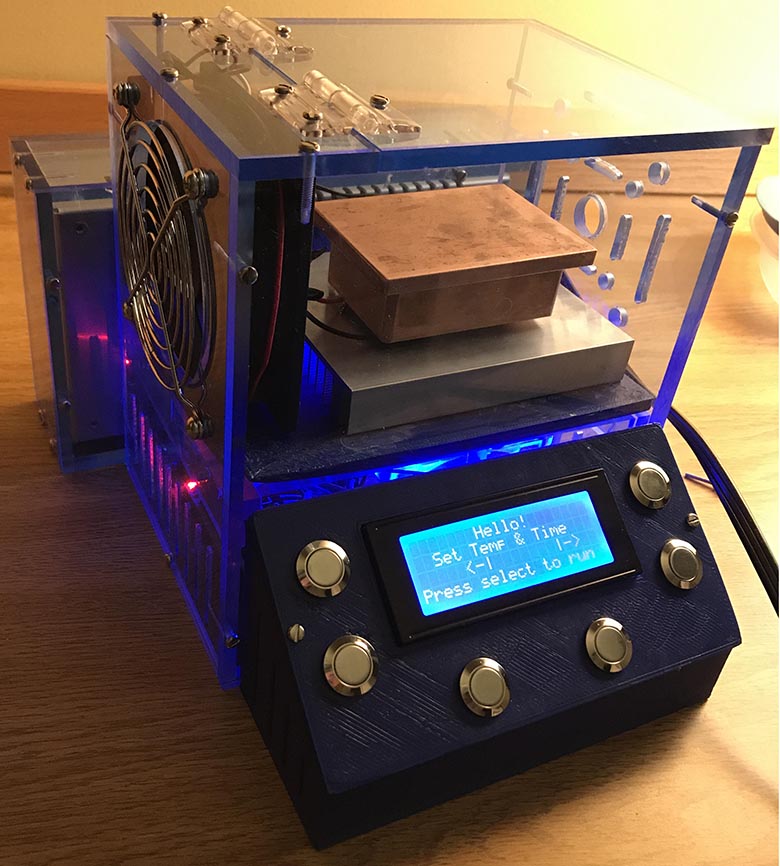3D Printed Devices

The advent of 3D printing and microcontrollers like Arduino and Raspberry Pi has greatly simplified the process of creating and optimizing prototype devices. Their relatively low cost and intuitive nature also make it easy to utilize these technologies in the classroom to teach drafting, coding, and design to students. Towards that end, we have developed the suite of 3D-printed Arduino-controlled devices listed below, which can easily be adapted to a variety of different chemical engineering courses/labs. The STL files and code for each device are also provided.
Plate & Frame Heat Exchanger

Design Credit: Jeffrey Neuhaus, Villanova ‘17
STL files: Plates
Code: n/a (just use a pump and thermocouple)
Description: This design can be used to demonstrate heat exchange in a plate & frame heat exchanger. The STL files above are for a flat rectangular channel, but they can be modified to increase turbulence, Nusselt number, and heat transfer. Just hook up two peristaltic pumps for a hot stream (40oC water on a hot plate) and cold stream (ice water) and use a thermocouple to measure inlet/outlet temperatures.
ED Visible Absorbance Flowcell

Application: Any experiment that measures absorbance (e.g. cell density, colorimetric reactions, etc.)
Design Credit: Brianna Conte & Will Landis
STL Files: Flowcell (
Code: Arduino IDE, contact Dr. Elmer for the app!
Circuitry: Coming soon!
Description: Samples can be statically loaded into this flow cell or dynamically pushed through with a pump. An LED at one end sends light through the sample towards a photoresistor at the other end. The Arduino monitors the voltage across the photoresistor, which varies according to the amount of light absorbed by the sample (e.g. high absorbance = low voltage across photoresistor). This setup allows the user to easily detect changes in absorbance (e.g. from a chemical reaction or increase in cell density).
Peltier Heating Block

Application: Any experiment that incubates samples at constant temperature (e.g. Gibson, digests, etc.)
Design Credit: Gabrielle VanDerGaag
STL Files: Enclosure (note: the image on the right shows an alternative plexiglass enclosure)
Code: Arduino IDE, contact Dr. Elmer for the app!
Circuitry: Coming soon!
Description: This device uses an Arduino and Peltier heater to control the temperature of a copper block that holds plastic PCR tubes, thereby allowing the user to incubate samples at constant temperatures. The device includes an LCD display that allows the user to input a target temperature and incubation time. Some machining is required for the copper block.

